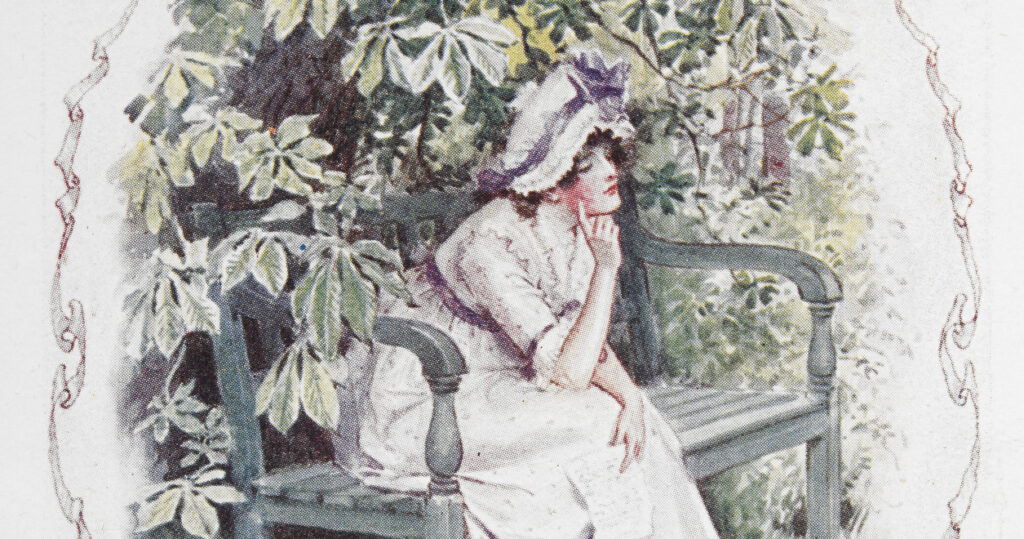A literary reflection by Molly Lackey on the novels of Jane Austen. This is the second installment of a new monthly series providing reflections on works of literature from a Lutheran perspective.
What is a virtuous woman? In the midst of the many and vociferous debates in American culture on man and woman, this little question seems to get short shrift. That’s a shame, because it’s an important question, one that is especially important to the young women in our lives. Navigating the barrage of physical, mental, and emotional changes that usher one from girlhood to womanhood is hard enough to begin with, and doing so without any image of what living out that impending vocation of woman looks like makes this challenging period seem insurmountable.
While there are a plethora of possible sources for showing young girls what a good woman looks like — foremost among them their mothers, sisters, friends and fellow laywomen — it’s very helpful to have the great examples (and stern warnings!) found in the pages of Jane Austen’s novels.
While today we may think of Christian fiction as being limited to stories like C.S. Lewis’s The Lion, the Witch, and the Wardrobe or “Amish Romance,” where the author’s intent is to explain doctrinal concepts allegorically or to provide family-friendly alternatives to mainstream novels, it’s helpful to remember that many authors of classic literature didn’t feel the need to draw such a sharp distinction between their faith and so-called secular art. While we never hear a sermon in a Jane Austen novel, it’s clear from her fiction, personal correspondence, and recorded prayers that Austen was a devout Christian.
It is also apparent that Austen, like the rest of us, had her own personal struggles with sin and temptation, felt loss and elation in their season, and was sometimes a good neighbor and sometimes, well, not so much. She distilled these experiences — universal to us all, male and female alike — and, combined with her razor-sharp wit and keen insight into human nature, wrote some of the best and most enduring works of fiction in the English language. Works which, it just so happens, seem to have a near-universal appeal to the blooming adolescent girl, anxious about how others think of her, curious about love and marriage, and desperate to discover what God has in store for her.
Austen wrote six complete novels during her short life: Sense and Sensibility (1811); Pride and Prejudice (1813); Mansfield Park (1814); Emma (1815); and Northanger Abbey and Persuasion (both 1817, published posthumously). They each follow a young woman entering adulthood, who has to maintain family relationships and friendships, and finds herself in some sort of a romantic tangle.
There is a fairly predictable plot structure in each one, as the main character generally has to deal with setbacks, a “red herring” suitor, and her own moral limitations before she is joyfully united in marriage to the hero. Each novel’s heroine is quite unique, and I have yet to meet a woman who does not have some definitive feeling of affinity with a specific Austen leading lady. (For me, it’s Elizabeth Bennet in Pride and Prejudice, warts and all: book-loving, dry, a tendency to put too much faith into her own powers … if you’ve read the book, you get the picture.) From Northanger’s fanciful Catherine and Persuasion’s long-suffering Anne, to the “handsome, clever, and rich” (not to mention self-assured!) Emma Woodhouse, Austen’s heroines run the gamut of feminine personalities.
But it’s in the main character’s interactions with those around her that we really see what Austen is trying to do in her novels. All of her main characters come from idiosyncratic families, have friends that are sometimes positive influences, sometimes negative, and clash with their neighbors from time to time, sometimes with near-disastrous results. While there is little “action” in a Jane Austen novel — it’s mostly talking, walking, riding, dancing and other activities that women in the late 18th and early 19th century regularly took part in — we find that, just as in our own lives, these quotidian occurrences can have high stakes.
A neighbor’s feelings are desperately hurt; a friend feels betrayed or excluded; someone is meddling in another person’s business; someone misunderstands an innocent circumstance; or, perhaps, a married woman is having an affair, a girl has run off with a cad of a lover, or a young man is written out of his inheritance. Nothing in Austen’s work is particularly foreign after you scrape away the vocabulary about Napoleonic wars, carriages, and old English law about land. Her work is about people, especially how a young woman ought to act within her family and broader community.
And how ought that young woman act? With kindness, patience, mercy, and, above all, a heart quick to apologize and forgive. The Jane Austen heroine — no matter whether she is outgoing or shy, quick-witted or slow to speak, impulsive or cautious, funny or somber — always has to face some moral failing on her part and on the part of her family, friends or suitor. This is no small task: facing down sin is never easy, as is clear from Scripture in passages like Psalm 51, the “Create in Me” that so many of us in the LCMS sing each week before communion (which also would have been familiar to Austen from using the Anglican Book of Common Prayer at home and in church services.) Austen’s heroines, like David in this psalm, mourn their sin deeply.
Austen’s novels generally do not deal directly with Christian doctrines like justification, confession and absolution, or the Lord’s Supper. That said, Jane is clearly interested in exploring how Christians — men and women — live out their baptized identity in Christ. Without ever using words like “sanctification,” Austen beautifully shows us what it looks like, in private moments of contrition and direct apologies found in all of her novels.
I am confident that these depictions of Christian virtue — even when it’s uncomfortable or painful, as it always is when we sin — are perennially helpful to us all, but especially to adolescent girls. I was also once a confused, weepy pre-teen and a prickly, searching teen. While changing your church and confession in the middle of your teenage years like I did is not for the faint of heart, becoming Lutheran provided me with a great deal of clarity in my status as a redeemed child of God and my vocation as a young woman, daughter, friend and student. In the midst of this deeply tumultuous period of my life, I latched onto two things: Luther’s Small Catechism and Austen’s Pride and Prejudice. One showed me how God loved me; the other showed me how I could love my neighbor.
Austen’s brilliance comes from depicting the Christian woman not as a collection of checked boxes, discrete tasks or mental acts of assent that make her a “good woman,” but as a forgiven child of God, endowed with certain gifts, hampered with certain burdens, prone to certain sins but nevertheless redeemed by Jesus, with a female body and feminine spirit, inextricable from one another, that color your entire life as undeniably a woman’s life. You may be reserved like Elinor or deep-feeling like Marianne; poor like Fanny Price or rich like Emma Woodhouse; marry young like Catherine Moorland, or never marry at all like Jane Austen herself. Your femininity is a gift to you, like your Baptism, and likewise it does not depend on your circumstances, your feelings, or whether or not you are “good enough” to keep it.
A good woman, in Jane Austen’s eyes, is a woman who is kind to her friends, patient with her family, steadfast when those around her pressure to do wrong, and eager to seek forgiveness and reconciliation when she sins. She should do all these things, just as a man should, but she will do them in a way that is feminine through and through, though not without the marks of her own unique personality.
So, if you haven’t already, read a Jane Austen novel, especially if you have a young daughter or younger sister at home with you. I hope you’ll find that Austen reminds you, in the midst of everything confusing and crazy in this world and at all ages, what it looks like for a Christian to serve and love her neighbor.
Cover image: “Oh! how heartily did she grieve over every ungracious sensation she had ever encouraged, every saucy speech she had ever directed towards him,” Illustration to ‘Pride and Prejudice’ by Charles Edmund Brock, 1907. Courtesy British Library.





